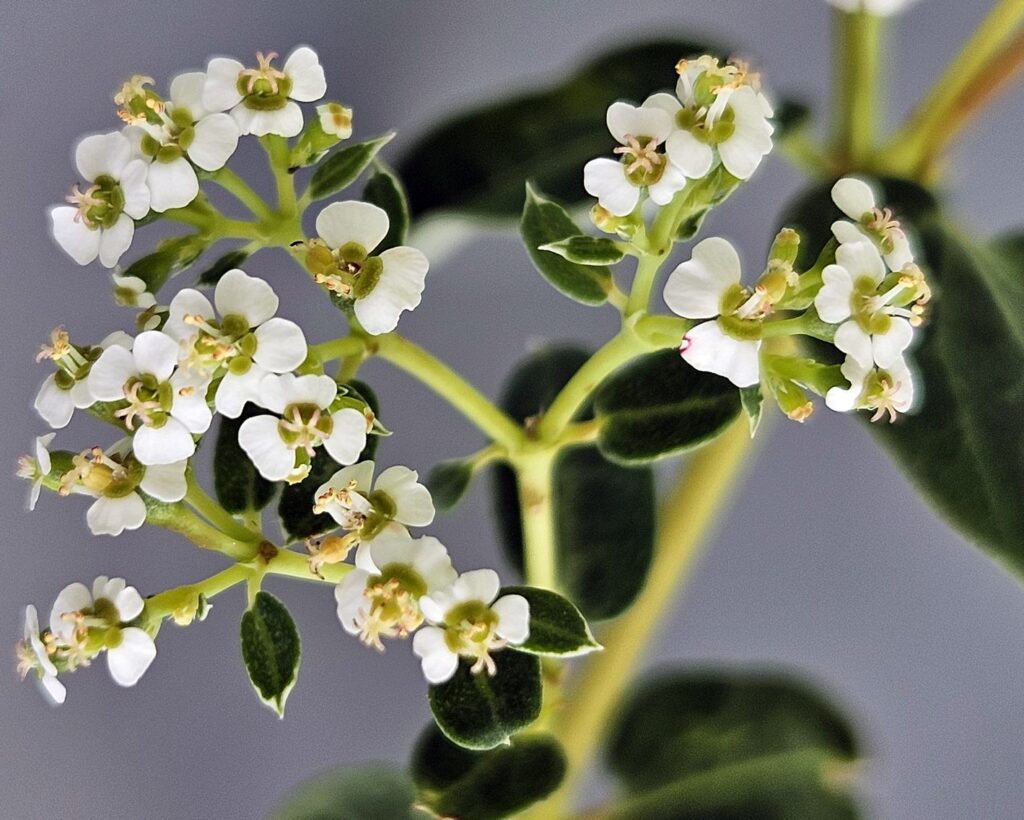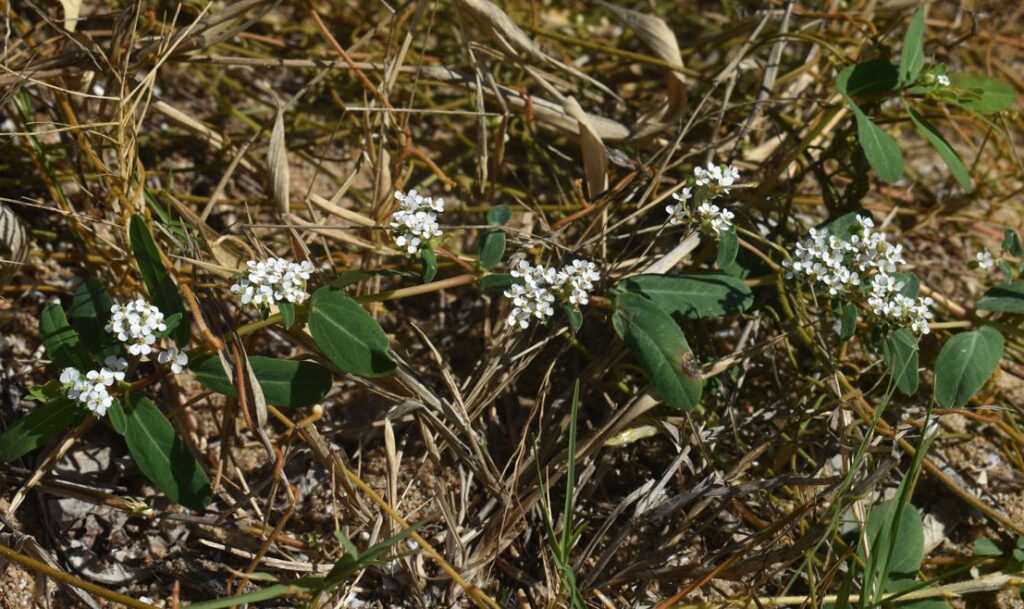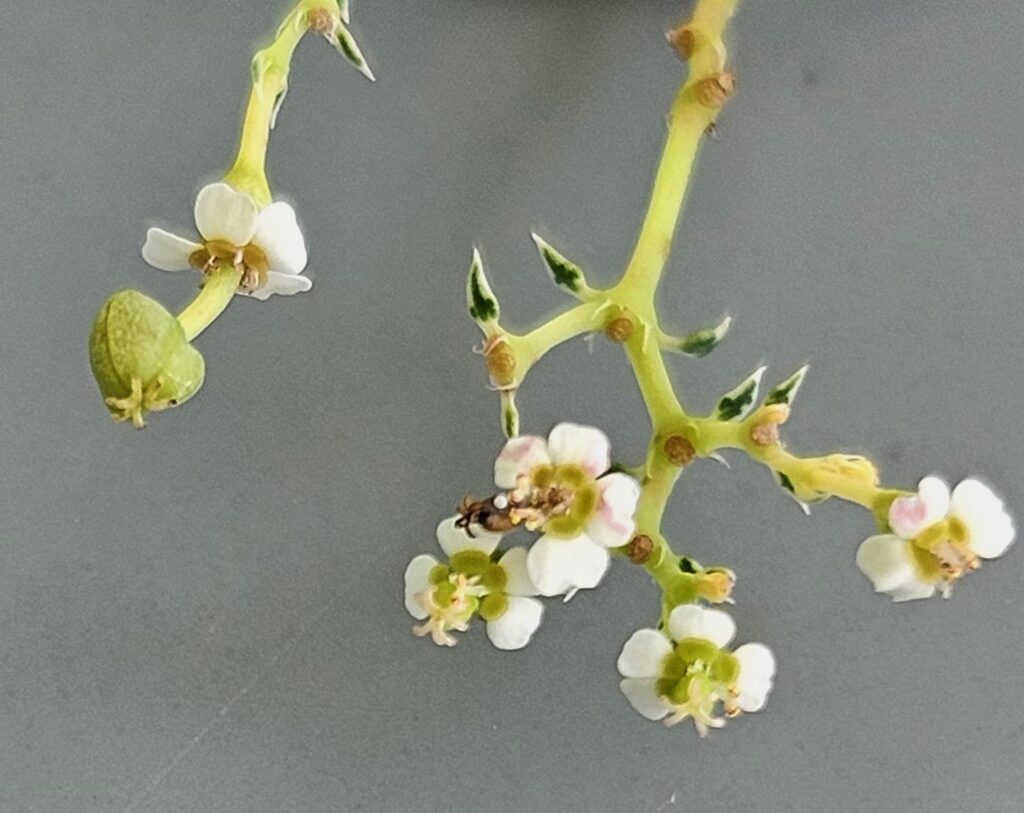
Now, after good rains in our region, is the best time of year to spot Euphorbia bifida with its clusters of tiny white flowers* sparkling amongst tangled grasses and other back-beach vegetation (photo below).

Euphorbia bifida (Euphorbiaceae) is widely distributed near the coast in Queensland and beyond, but being small and low-growing, it is very inconspicuous when it is not flowering.

Euphorbia bifida can be propagated fairly easily from cuttings and makes an attractive addition to a well-watered planter box (photo above) or sunny garden. Despite growing naturally in sandy coastal dunes, where it survives extreme heat and dryness, most Euphorbia bifida plants in cultivation seem intolerant of prolonged dry periods. Possibly this is because our cutting-grown plants never develop the deep, tough roots of natural seed-grown Euphorbia bifida.

*Viewed very closely, the floral parts of our PoM (photo above) hint at something that serious botanists understand – these are not ordinary flowers! What most of us happily call “flowers” on Euphorbia bifida and other Euphorbiaceae, are actually more complex structures. They are correctly called ‘cyathia’ (singular: cyathium). You can do an online search for cyathium details if you’d like to explore this botanical rabbit-hole!